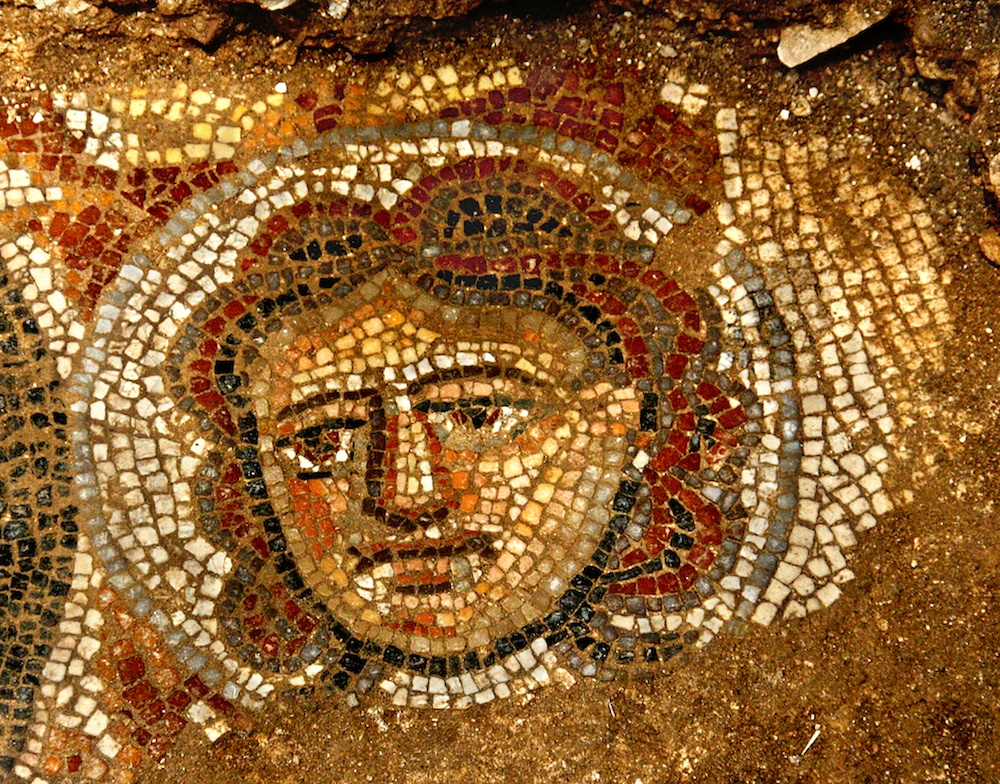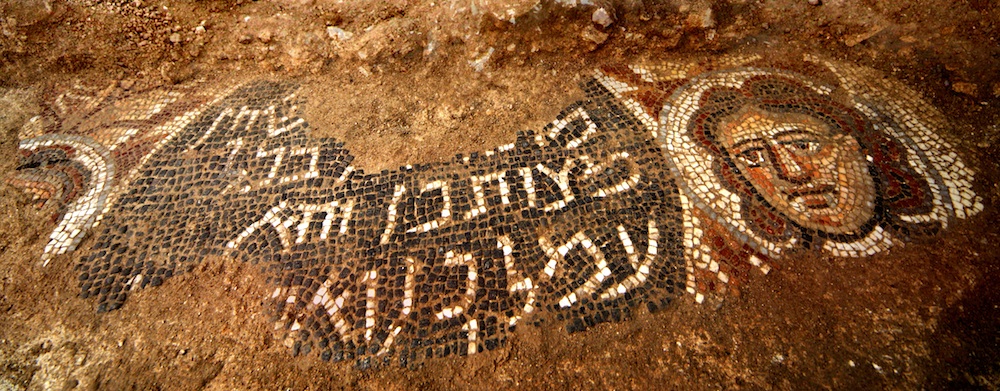Ancient Mosaic Depicting Fiery Bible Story Discovered

A glittering mosaic of colored stones once decorated an ancient synagogue floor with scenes of the Biblical hero Samson getting revenge on the Philistines.
This newly excavated discovery in the ancient Jewish village of Huqoq not only depicts an unusual scene — Samson tying torches to foxes' tails in order to burn his enemies' crops — it's also remarkably high-quality, said dig archaeologist Jodi Magness of the University of North Carolina, Chapel Hill.
In a mosaic, "the smaller the cubes, the finer the work," Magness told LiveScience. "Our cubes are very small and fine."
The mosaic decorates part of a synagogue dating back to about A.D. 400 to 500. So far, Magness and her team have excavated only part of the eastern wall of the structure, so they don't yet know how big the synagogue was. But the building appears to be made of large, "beautifully cut" blocks of stone, Magness said, suggesting an expansive structure. [Gallery: Ancient Israeli Treasures]
The mosaic, which is incomplete, depicts several scenes. In one, two female faces flank a Hebrew inscription about rewards for people who perform good deeds. In the other, Samson, of the biblical story Samson and Delilah, ties torches to pairs of foxes, an event described in the Book of Judges in both the Christian and Hebrew Bibles. As the story goes, Samson falls in love with a woman of Philistine origin, a people who ruled the city-states of Gaza, Askelon, Ashdod, Ekron and Gath in the ancient Middle East. The Philistines are depicted as enemies of the Israelis in the Bible.
Do you think archaeology will offer much support for Biblical stories?
At his wedding feast with his Philistine bride, Samson taunts the Philistine groomsmen with a riddle they cannot possibly answer. When his bride begs Samson for the solution and passes it on to her kinsmen, he kills 30 men from Askelon in a rage. When he returns home, he finds that his bride has been given to someone else. In revenge, Samson gathers pairs of foxes and ties their tails together with torches between them. He then looses 300 of the animals on the Philistines' fields, destroying their crops.
Sign up for the Live Science daily newsletter now
Get the world’s most fascinating discoveries delivered straight to your inbox.

It's this scene that is depicted in the mosaic. It's an "unusual" subject, Magness said, because only two other synagogues have been found that depict Samson at all, much less a fiery scene of revenge. But one of the other ancient synagogues that does depict Samson is only a few miles from the newly excavated building, Magness said.
"It suggests that, for whatever reason, Samson was popular in the local area," she said.
The synagogue would have been the only house of worship in the village, Magness said. For a village synagogue, it's very fancy, suggesting that the village was an affluent place. That's interesting, Magness said, because the area was under the rule of Byzantine Christians at the time the synagogue was in use. Usually, this is seen as a time of oppression for Jewish peoples, but it seems that the residents of this particular village were doing well.
The archaeologists uncovered the mosaic last week. A student on his first dig was carefully scraping away at the dirt with a hoe when he felt the hard surface of the mosaic. He called Magness over, and they carefully excavated, brushing away dirt to reveal a colorful female face staring back at them, exposed to the light of day for the first time in 1,500 years.
"I think that was probably by far the most exciting moment I've had as an archaeologist in my life," Magness said.
Follow Stephanie Pappas on Twitter @sipappas or LiveScience @livescience. We're also on Facebook & Google+.

Stephanie Pappas is a contributing writer for Live Science, covering topics ranging from geoscience to archaeology to the human brain and behavior. She was previously a senior writer for Live Science but is now a freelancer based in Denver, Colorado, and regularly contributes to Scientific American and The Monitor, the monthly magazine of the American Psychological Association. Stephanie received a bachelor's degree in psychology from the University of South Carolina and a graduate certificate in science communication from the University of California, Santa Cruz.










